Everything you need to know about OOH advertising (+ Examples)
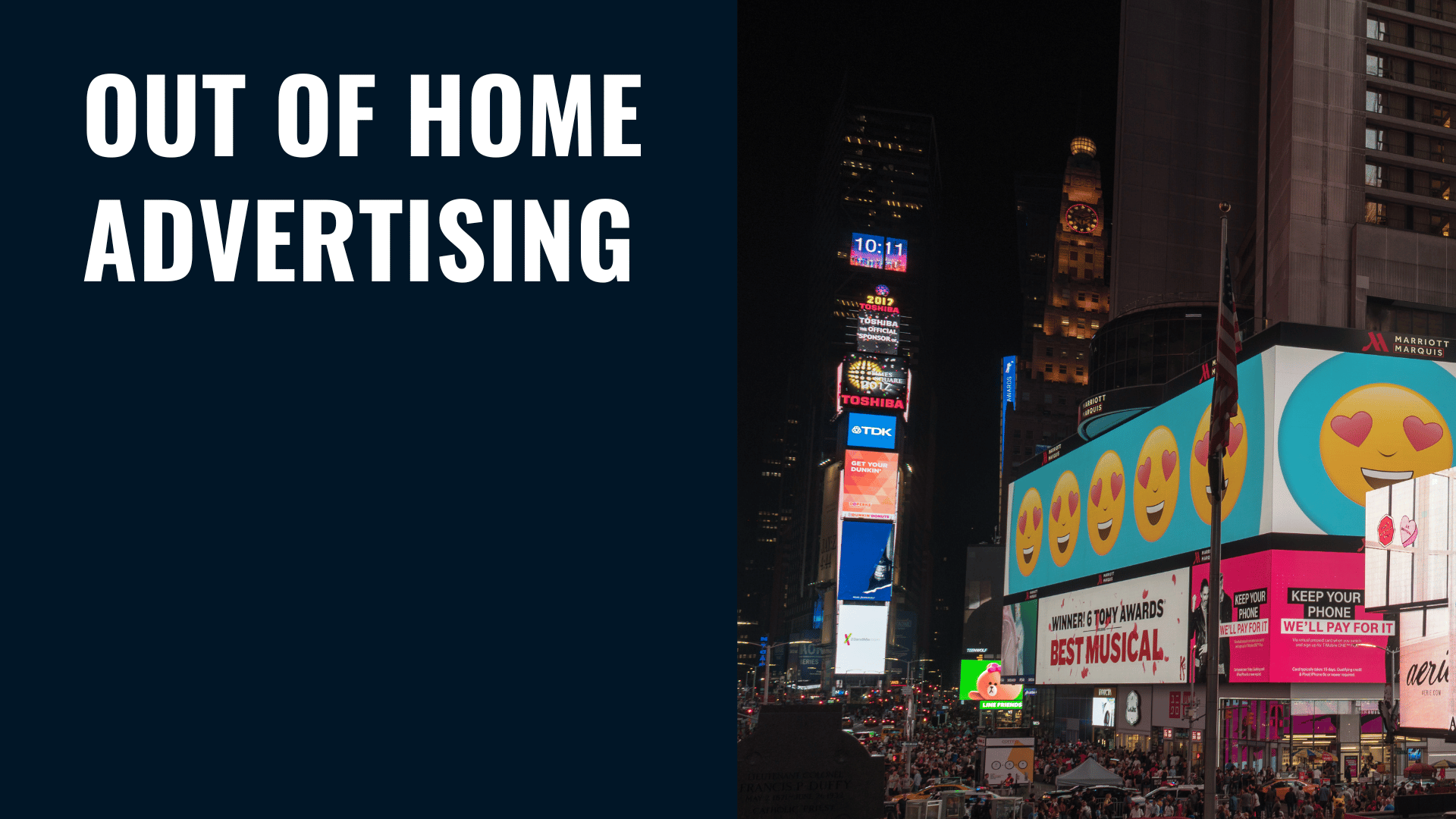
While a lot of modern advertising strategy is centred around our online lives in the form of social media, content and email marketing, etc — there is still a great deal of value to be found in tangible forms of marketing. A good example is out-of-home (OOH) advertising. Billboards, benches, posters and public transport are some of the best ways to get your brand seen by thousands of eyes, but unlike online advertising, it can be hard to measure its success.
While some forms of traditional advertising, such as print or radio, have seen spending declines over the years, OOH advertising continues to grow — with British spending for OOH reaching £900 million and growing 31% in 2022.
In this article we are going to break down everything there is to know about out-of-home marketing, how it can be measured and why it might be beneficial for your business.
What is out-of-home (OOH) advertising?
Out-of-home (OOH) advertising is essentially any type of marketing that can be found outside the potential customer's home. These days most OOH advertising tends to fall into two camps — “traditional” and “digital”. Traditional advertising refers to static outdoor media, including:
- Billboards
- Murals
- Posters
- Wallscapes
- Outdoor signs
- Banners
While digital out-of-home advertising (DOOH) refers to the computer-controlled electronic displays that you might find in Time Square, for example. Other types of DOOH include dynamic displays played at train stations, airports, etc, or even those that can be found in the backs of taxis or shopfronts.
Where are the best places to run OOH advertising campaigns?
The goal of OOH advertising is to get your product or service seen by as many eyeballs as possible, which means that you want them to be placed in areas with a lot of footfall such as urban centres.
Examples of good places to run OOH campaigns include:
- Busy intersections (town centres, shopping streets)
- Public transport hubs (bus stops, train stations)
- Public transport (busses, trains, taxis)
- Motorways (billboards)
- Street furniture (benches, ATMs)
Keep in mind: Just because your poster or billboard is located in a busy spot, doesn't mean you're guaranteed to get the best ROI! It’s important to do your research to make sure you’re reaching your target audience.
Benefits of OOH advertising
OOH advertising is all around us; when we commute, go shopping, drive home for the holidays or wait for the bus. Here are a few of the many advantages of OOH advertising.
Reach a broad audience
OOH means you can reach large groups of varying demographics. With the increased use of ad blockers and the decline of print means that OOH marketing is much harder to ignore. According to Outsmart, OOH reaches 98% of the UK population at least once a week.
Encourages creativity
The most successful OOH marketing campaigns are smart, creative and eye-catching. Businesses and brands who want to make an impact on their target audience will benefit from bold designs, clever copy and a well-researched location.
Targeting the right audience
OOH advertising isn’t just for well known brands and large corporations, or just for the busiest commuter stops and hubs. On a local level, OOH is perfect for smaller or medium-sized businesses. It’s one of the best ways to align your product and service with your ideal customer. For example: advertising your hair care brand in a local hairdresser, or a sports drink in fitness centres.
OOH is highly trusted
Because OOH exists in the public sphere, it’s a very trusted form of advertising in comparison to online — arguably the most trusted. It is a fantastic tool for brand awareness and to build positive associations and sentiment between you and your target audience. Studies have also shown that consumers are much more likely to engage with a digital ad after seeing it the brand advertised in public.
Challenges of OOH advertising
While there are huge benefits to running an OOH advertising campaign, there are some challenges.
Difficult to measure success
Due to the nature of OOH advertising, it can be hard to assess whether it has been successful. Metrics for OOH are hard to track, but there are some ways to do so (see below for tips).
Design
Because OOH exists in the public space, it can’t be removed or “clicked away” — as a result it’s vital that billboards, furniture and posters respect the space they’re in and not attempt to disrupt the day-to-day of public life. Furthermore, the smarter and more interesting the design that works with the urban space will more likely be noticed.
Limited focus
Without thorough research, it’s easy for OOH to become an afterthought. It can also be harder to connect with niche audiences; using sheer volume of people over more direct forms of advertising that bring in reliable ROI.
How do you measure the success of OOH advertising?
As previously mentioned, one of the greatest challenges for brands is how to track OOH metrics. Data is important, so how can you measure the amount of people who see your OOH ad? How do you know whether it has been a success?
Before you place any kind of OOH media you should do your research — this includes measuring the population in your chosen area to help calculate an impression rate (ie. how many people see your ad). Location data is a key way of estimating how many people see your ad every day.
From here you can perform visual attention research. You can calculate this using determining the distance from where your advertisement can be seen and how likely people are to see it as they pass through the area. Another way to track visual attention research is to figure out the average time people wait for a bus, train or in traffic. This can give you a rough idea of how often your ad will be seen and for how long.
Surveys are another good way to understand more about your audience and what resonates with them. Lastly, offering some kind of promo code or discount is a great way to digitally track how many people saw, and more importantly engaged with, your ad.
Lastly and most simply, what impact has it made to your sales? While you may be running multiple advertising campaigns at the same time, they should complement each other. A boost in sales, orders or footfall may be an indicator that your OOH ad has been a success.
Tips for creating a successful OOH advertising campaign
When you’re planning your next OOH advertising campaign, there are a few things to keep in mind to make sure it’s a success.
- Understand your target audience: These are the people you ideally want to pursue with your ad, and you should know how best to grab their attention.
- Set campaign goals: What is the reason for your billboard? Is it brand awareness, to drive sales, share a new service or deliver a call-to-action? The purpose of the campaign should be clear from the get-go.
- Have a budget: Having a budget will help you determine the how, what and where of your OOH advertisement.
- Location and placement: Prime real estate in urban centres will always be more expensive, but that doesn’t always have to be the goal. A targeted, researched location with less footfall may attract more attention than simply going for the busiest areas.
- Be memorable: The whole idea of OOH advertising is to grab the attention of the passerby — and to get them talking — so therefore you want to make your ad creative, unique, informative and true to your brand.
5 great examples of UK OOH advertising campaigns
1. Quorn - Asking No. 10 to ‘stop telling porkies’
Bye Bye Bori….ing sandwiches. #NoMorePorkies pic.twitter.com/FDVAb2g67e
— Quorn Foods UK (@QuornFoods) September 5, 2022
Sometimes brands can successfully (and powerfully) link their product to their values to create impact and brand awareness. This is what happened with Quorn’s tongue-in-cheek ‘stop telling porkies’ OOH advertising campaign.
The company displayed their meatless product on a bright orange van, which deliberately drove and delivered their pork-free sandwiches to No. 10 right after former Prime Minister Boris Johnson resigned.
2. Calm App - Just resigned?
No10 we're looking at you 👀 pic.twitter.com/3HhKoUj5aW
— Calm (@calm) July 12, 2022
The meditation app Calm also got in on the recent political upheaval by running a group of billboards mocking Boris Johnson’s resignation. The cheeky OOH campaign read ‘Just resigned? Take a deep breath,’ which throughout the London Underground and on the tube following the resignation.
3. Tesco Mobile - ‘Brits abroad’ billboards
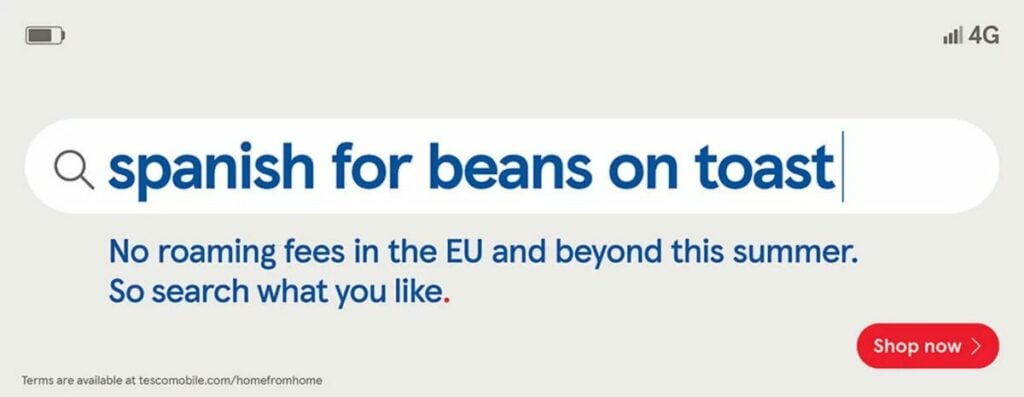
Tesco Mobile poked fun at clueless Brits abroad in its 2022 OOH ad campaign. Their billboards with funny search enquiries were both amusing and promoted their no-extra-charge roaming services. They called it the ‘Home From Home’ campaign which played on the idea that British people seek at-home comforts when travelling abroad – such as Googling “Spanish for beans on toast.”
4. CALM - Suicide prevention campaign ‘smiling portraits’

In the much more serious but incredibly powerful campaign, the suicide prevention charity Campaign Against Living Miserably (CALM) installed a series of smiling portraits on London’s busy South Bank. The campaign aimed to offer practical advice for how to know if someone was contemplating ending their life, displaying the last portraits of many happy-looking individuals who lost their lives to suicide. The campaign wanted to raise awareness that even happy, successful people may be struggling.
5. Google - Make the Most of Summer
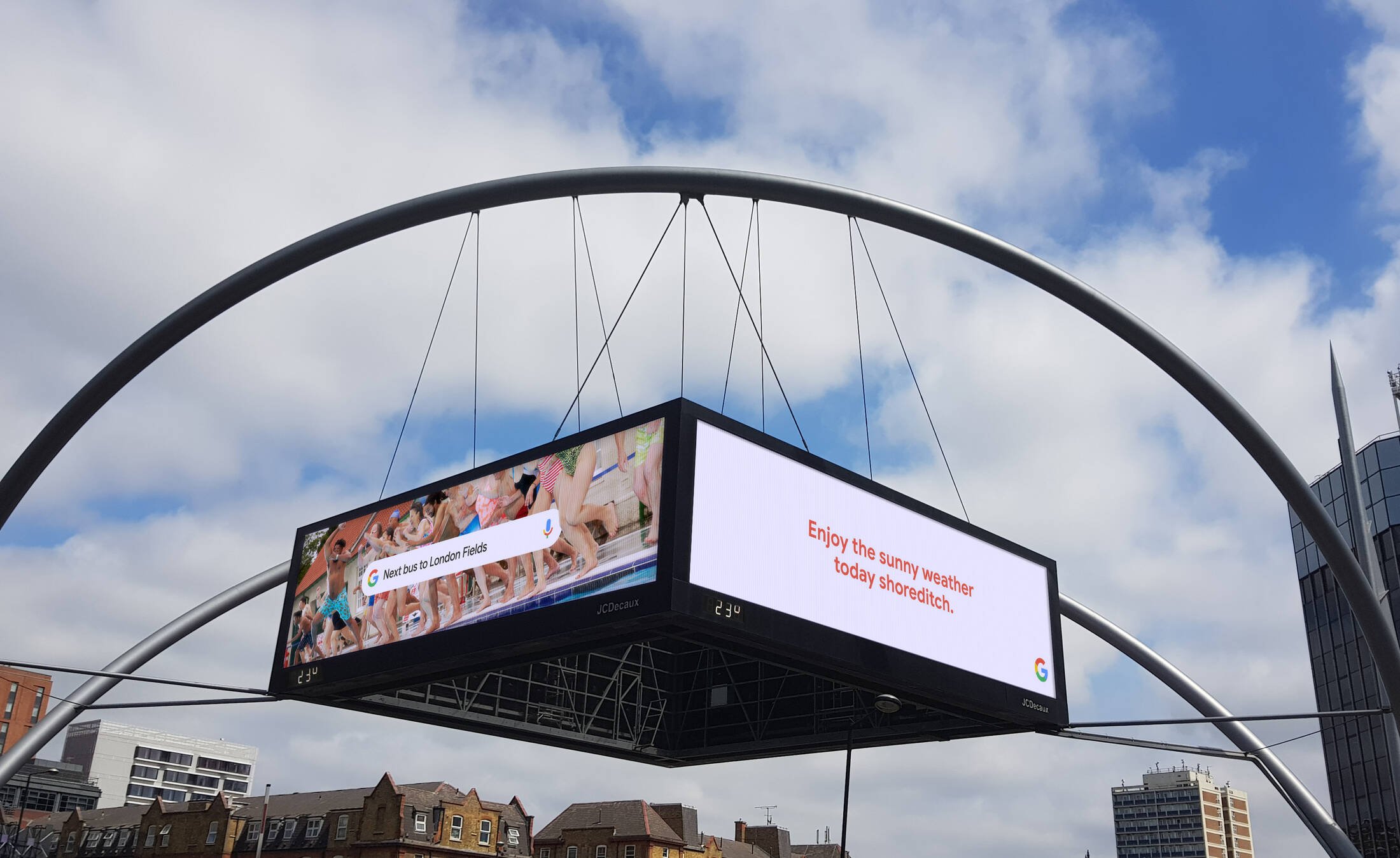
This campaign by Google centred around the beloved Great British summer time. In true Google style, the campaign featured dynamic, visual DOOH ads which highlighted Google’s search and Maps functions in the cities they were displayed, providing data-driven summertime search enquiries such as “Next bus to London Fields” or “best ice cream in Glasgow.”
The best out-of-home advertising campaigns are designed to get people talking, thinking and engaging with your brand or message. Good OOH advertising can boost trust in your business and get your brand seen by thousands of potential new customers every day. Despite being one of the most traditional forms of advertising, OOH is booming, and highly powerful when part of a multilayered marketing campaign.
FAQ
How successful is OOH advertising?
OOH advertising is a very effective offline marketing strategy, and is one that is well-known to support and drive online marketing activities. A powerful OOH campaign that’s part of a larger, holistic marketing campaign can help your brand be seen by thousands of potential new customers.
What are 5 types of OOH advertising?
There are many types of OOH advertising. These include:
- Billboards (static, digital and mobile)
- Street furniture
- Murals and wall art
- Posters
- Public transport
- POS displays
- Shopfronts
What is guerilla marketing?
Guerilla marketing is a style of marketing that leverages surprising, unique or unconventional interactions to grab attention and deliver a message. While it technically can count as OOH advertising as it can be powerful when placed in a public space, it’s different to traditional OOH advertising such as billboards.
What is the difference between OOH and DOOH?
Out-of-home (OOH) advertising usually refers to static forms of outdoor advertising, while digital out-of-home (DOOH) advertising is dynamic, technologically advanced OOH that’s usually powered with AdTech. This allows brands to retarget, personalise and measure the impact of the campaign.
Emily Browne is a writer for ShippyPro who blends her passion for writing with an interest in all things e-commerce. Emily strives to make complex topics more digestible, proving that the world of logistics isn't as confusing as it sometimes feels! Her expertise in supply chain management, coupled with a knack for storytelling, helps readers navigate the complex world of e-commerce and shipping.

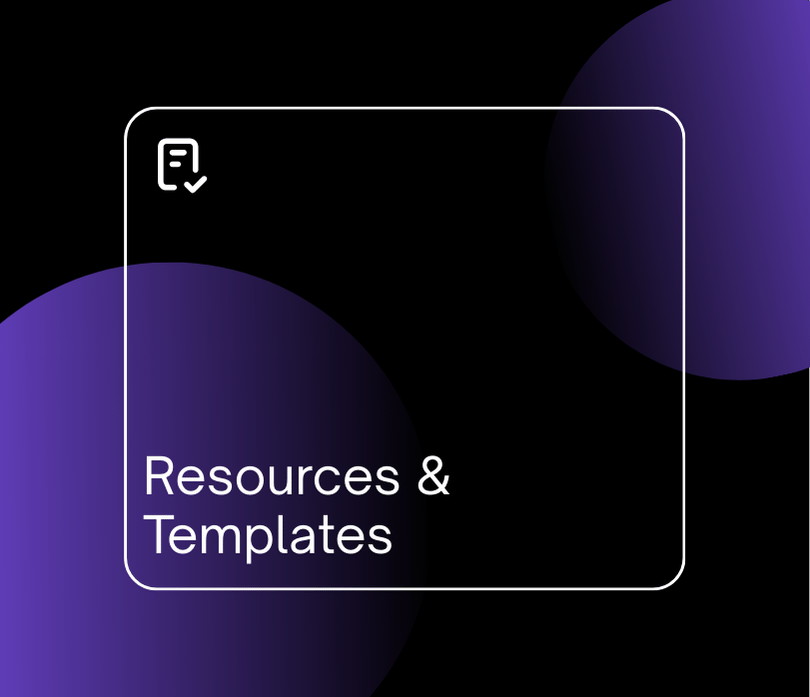

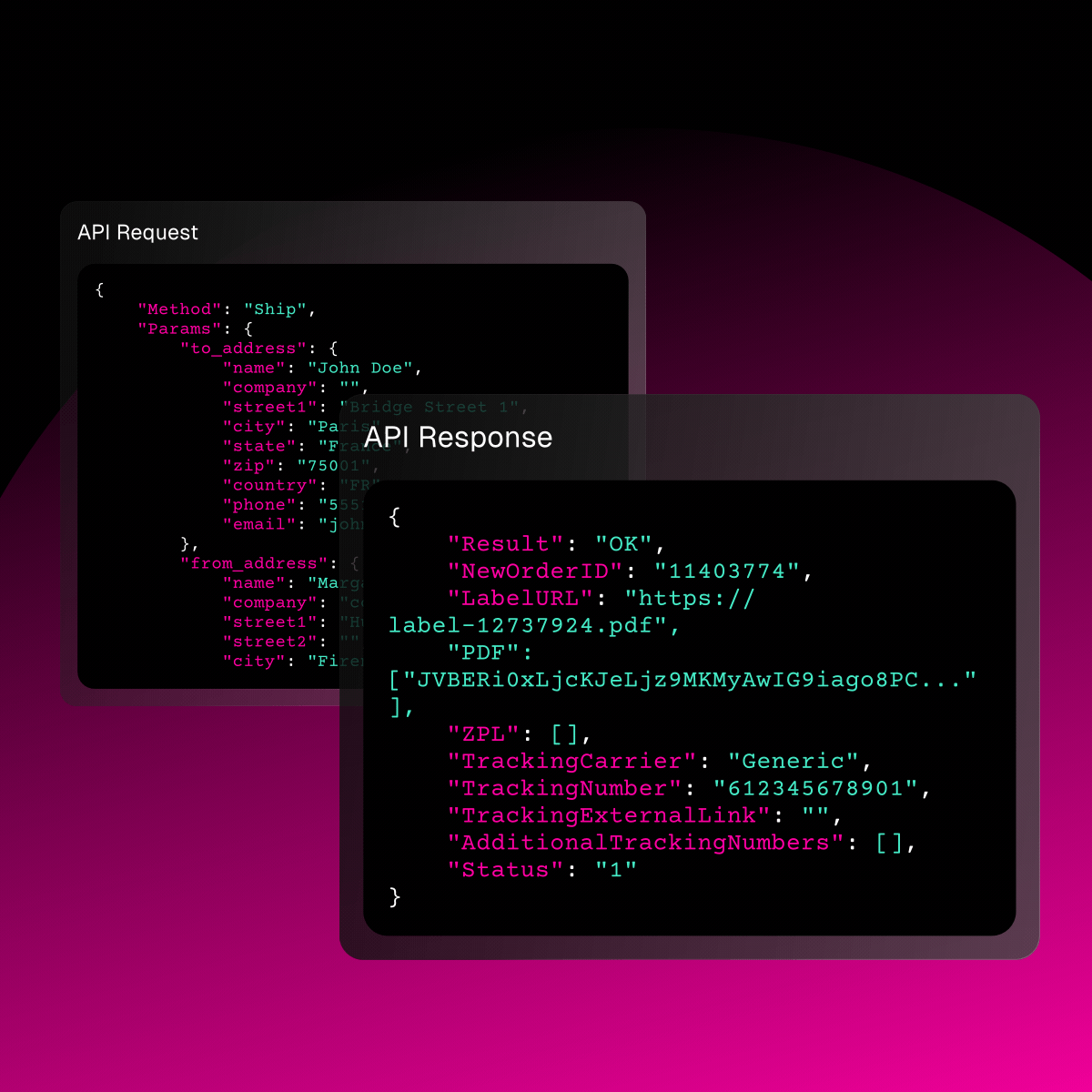
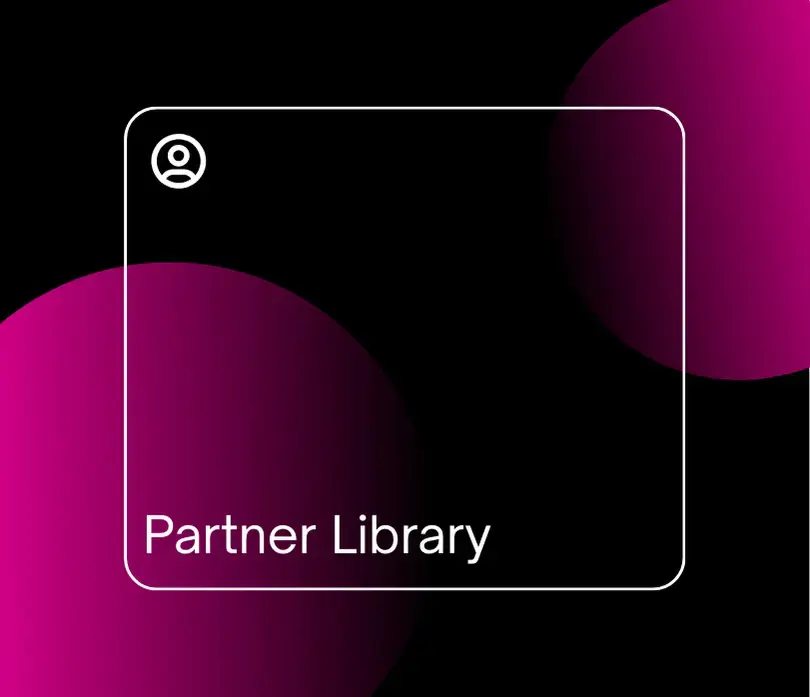

.webp)



.webp)
